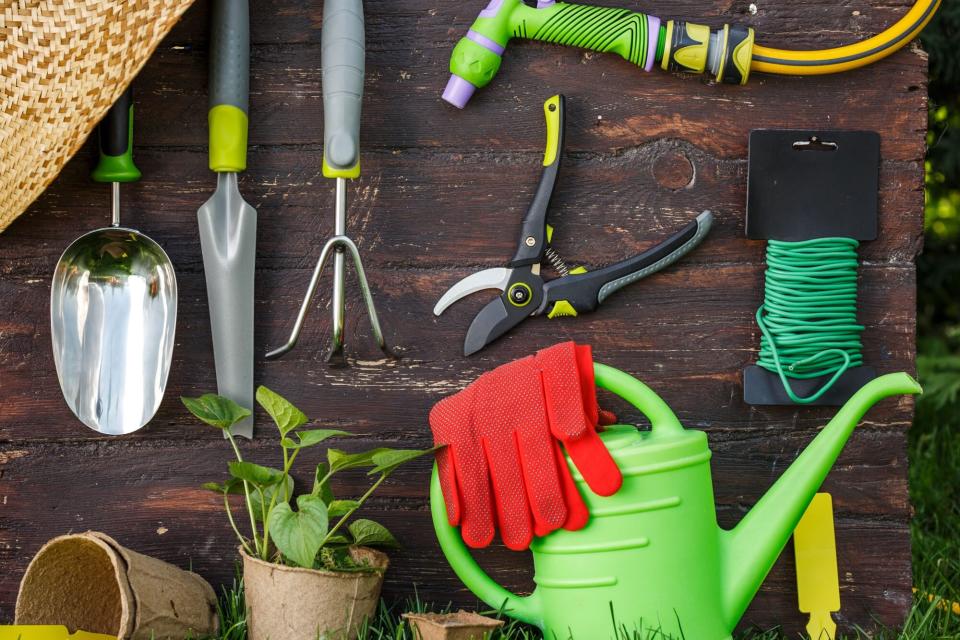How to Sharpen and Restore Your Gardening Tools
Nothing ruins your afternoon gardening plans faster than dull tools. "They can either make or break your project," says Natasha Nicholes, the founder of We Sow We Grow, a community-based gardening initiative in Chicago, Illinois, dedicated to the furtherance of gardening and farming in an urban landscape. "Dull tools often lead to improperly cut stems or branches."
Sharp, cared-for essentials can do more than keep your garden looking trim, says Rebecca Sears, the chief gardener at Ferry-Morse; they can save you time and money, too. "Whether it means digging into the soil or cutting through weeds, sharp, rust-free tools will make your gardening tasks that much easier," she says. "They will also save you money in the long run. If the tools are kept in good shape, you won't need to replace them as often." Ahead, how to sharpen and restore your gardening tools to their original glory.

Maximkostenko / Getty Images
Related: 10 Essential Gardening Tools
Remove the rust.
Before you sharpen your tools, Sears says to remove any rust or build-up that might be corroding them. "A light rust can be taken care of with a high-grit sandpaper or fine steel wool. For a heavier rust, a stiff wire brush and heavy pressure should solve the problem," she says. "If the rust is so bad that it has made the steel surface rough and gritty, I recommend placing a wire brush attachment to an electric drill for the best success." Once the tarnish is removed, add a coat of boiled linseed oil to help stop the oxidation process, adds Sears. "It will dry and harden on the surface, protecting the tool," she explains.
Gather your gear.
Ready to begin the sharpening process? Sears notes that it's time to gather your gear. "For shovels and trowels, you can use a hand-held mill file or rasp from your local hardware store," she says. "For pruning shears and knives, you will need a honing stone with a pointed edge, such as a diamond honing stone or a whetstone."
Apply even pressure when restoring a trowel.
After cleaning your trowel, Sears says you can use a rasp or similar flat file to sharpen it. "Draw the file across the edge of the trowel, moving away from your body," she advises. "Maintain long and even motions to have a consistent sharpness along the edge." Since trowels don't need to be razor sharp (just pointy enough to penetrate soil), Sears says it's important to avoid overdoing the blade area. "There's also no need to worry about the short edges near the handle," she adds. "Sharpening them won't increase the tool's effectiveness and could even be a danger to your hands."
Sharpen shears from top to bottom.
To spruce up pruning shears, place them on a flat surface and slide the honing stone across the blade until you reach your desired level of sharpness. "You want to sharpen to the point where you can easily slice paper with the shears," Sears says. To ensure the blades of your gardening shears are extra pointy, Nicholes says to apply even pressure while sliding the stone in the direction of the bevel (or the sloped edge of the blade). "Sharpen in one direction only—from the top of the bevel to the bottom—making sure not to go back and forth," she advises.
Go slowly when sharpening your shovels.
Sears recommends using a rasp or handheld file to sharpen your shovel, like you would a trowel. "File slowly around the edge in one direction, while moving away from your body," she advises. "A shovel is a big tool and sharpening can take time, so patience is important."

